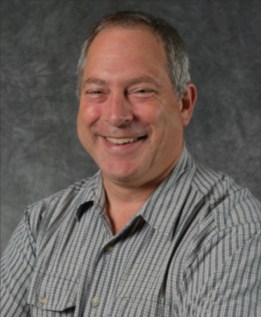Join the audience for a live webinar at 6 p.m. BST/1 p.m. EDT on 17 April 2024 to find out more about the unique data obtainable by combining electrochemistry and neutron reflectometry in situ
Want to take part in this webinar?

The unique properties of neutrons make them unmatched probes for materials science. Although they are particles, they have a wave-like nature, with wavelengths in the same range as X-ray wavelengths, and readily pass through solid matter. Like X-rays, they refract, diffract, and interfere constructively and destructively with each other. Unlike X-rays, which interact mainly with the electron clouds around the atoms of a material, through electromagnetic forces, neutrons interact mainly with atomic nuclei, through the strong nuclear force; consequently, they can also be used to determine a material’s composition, by both element and isotope. Neutrons interact with light elements as strongly as with heavy elements, sometimes even more strongly, and many possibilities exist for isotope labelling experiments. For example, neutron scattering techniques readily detect hydrogen, which is a difficult or impossible target for most other analytical methods. They also distinguish hydrogen from deuterium like night from day.
This webinar describes the combination of electrochemical measurements with neutron reflectometry, a surface analytical technique, to provide sub-nanometre scale compositional and structural information on electrode surfaces under electrochemical control that is unobtainable by any other means. Illustrative examples using neutron reflectometry to monitor oxide film growth and hydrogen absorption on titanium, zirconium and copper are given.
An interactive Q&A session follows the presentation.
Want to take part in this webinar?

James (Jamie) Noël is an electrochemist and corrosion scientist whose research includes studies of the degradation of nuclear fuel and container materials for the permanent disposal of nuclear fuel waste. He leads a large and diverse research group that conducts experimental research on many aspects of the corrosion of copper, carbon steel, uranium dioxide, stainless steels, nickel alloys, and other materials. His industry research partners include the Nuclear Waste Management Organization (NWMO, Toronto), the Swedish Nuclear Fuel and Waste Management Company (SKB, Sweden), the National Cooperative for the Disposal of Radioactive Waste (Nagra, Switzerland), the Nuclear Waste Management Organization of Japan (NUMO, Tokyo), and Canadian Nuclear Laboratories (CNL, Chalk River). Jamie earned BS and MS degrees in chemistry from the University of Guelph and a PhD in chemistry from the University of Manitoba. He teaches ECS Short Courses on the Fundamentals of Electrochemistry at the Society’s biannual meetings, has been heavily involved with the ECS Corrosion Division and ECS Education Committee, and is an Associate Editor of CORROSION Journal. His awards include the ECS R.C. Jacobsen and Lash Miller Awards, Fellow of ECS, and the Western University Distinguished Research Professorship, Faculty Scholar Award, and Florence Bucke Science Prize. He has co-authored more than 130 refereed journal articles, 50 refereed conference proceedings papers, 20 commercial reports, and five book chapters – and scattered a few neutrons along the way.
"interface" - Google News
March 25, 2024 at 11:36PM
https://ift.tt/PeNrlxg
Neutron reflectometry, electrochemistry, surface and interface analysis – Physics World - physicsworld.com
"interface" - Google News
https://ift.tt/zfoCemJ
https://ift.tt/QoIlPpB
Bagikan Berita Ini















0 Response to "Neutron reflectometry, electrochemistry, surface and interface analysis – Physics World - physicsworld.com"
Post a Comment